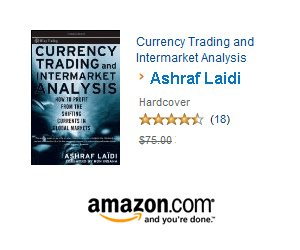Forum > View Topic (Poll)
What is the composition of your cryptoholdings?
View Poll..
|
Mainly BTC
|
|
Mainly ETH
|
|
Mainly ADA
|
|
BTC & ADA
|
|
ETH & ADA
|
|
ETH & BTC
|
|
Other
|
This thread was started in response to the Poll:






Investors are warned to never put all their eggs (investments) in one basket (security or market) which is the central thesis on which the concept of diversification lies.
To achieve a diversified portfolio, look for asset classes that have low or negative correlations so that if one moves down the other tends to counteract it.
ETFs and mutual funds are easy ways to select asset classes that will diversify your portfolio but one must be aware of hidden costs and trading commissions.
What Is Diversification?
Diversification is a battle cry for many financial planners, fund managers, and individual investors alike. It is a management strategy that blends different investments in a single portfolio. The idea behind diversification is that a variety of investments will yield a higher return. It also suggests that investors will face lower risk by investing in different vehicles.
5 Ways to Help Diversify Your Portfolio and Trading Signals
Diversification is not a new concept. With the luxury of hindsight, we can sit back and critique the gyrations and reactions of the markets as they began to stumble during the dotcom crash and again during the Great Recession.
Here are five tips for helping you with diversification:
1. Spread the Wealth
Equities can be wonderful, but don't put all of your money in one stock or one sector. Consider creating your own virtual mutual fund by investing in a handful of companies you know, trust and even use in your day-to-day life.
But stocks aren't just the only thing to consider. You can also invest in commodities, exchange-traded funds (ETFs), and real estate investment trusts (REITs). And don't just stick to your own home base. Think beyond it and go global. This way, you'll spread your risk around, which can lead to bigger rewards.
People will argue that investing in what you know will leave the average investor too heavily retail-oriented, but knowing a company, or using its goods and services, can be a healthy and wholesome approach to this sector.
Still, don't fall into the trap of going too far. Make sure you keep yourself to a portfolio that's manageable. There's no sense in investing in 100 different vehicles when you really don't have the time or resources to keep up. Try to limit yourself to about 20 to 30 different investments.
2. Consider Index or Bond Funds
You may want to consider adding index funds or fixed-income funds to the mix. Investing in securities that track various indexes makes a wonderful long-term diversification investment for your portfolio. By adding some fixed-income solutions, you are further hedging your portfolio against market volatility and uncertainty. These funds try to match the performance of broad indexes, so rather than investing in a specific sector, they try to reflect the bond market's value. https://www.gold-pattern.com/en
These funds are often come with low fees, which is another bonus. It means more money in your pocket. The management and operating costs are minimal because of what it takes to run these funds.
One potential drawback of index funds is their passively managed nature. While hands-off investing is generally inexpensive, it can be suboptimal in inefficient markets. Active management can be very beneficial in fixed income markets, especially during challenging economic periods.
3. Keep Building Your Portfolio
Add to your investments on a regular basis. If you have $10,000 to invest, use dollar-cost averaging. This approach is used to help smooth out the peaks and valleys created by market volatility. The idea behind this strategy is to cut down your investment risk by investing the same amount of money over a period of time.
With dollar-cost averaging, you invest money on a regular basis into a specified portfolio of securities. Using this strategy, you'll buy more shares when prices are low, and fewer when prices are high.
4. Know When to Get Out
Buying and holding and dollar-cost averaging are sound strategies. But just because you have your investments on autopilot doesn't mean you should ignore the forces at work.
Stay current with your investments and stay abreast of any changes in overall market conditions. You'll want to know what is happening to the companies you invest in. By doing so, you'll also be able to tell when it's time to cut your losses, sell and move on to your next investment.
5. Keep a Watchful Eye on Commissions
I try to copy the market cap of say 20-50 coins.